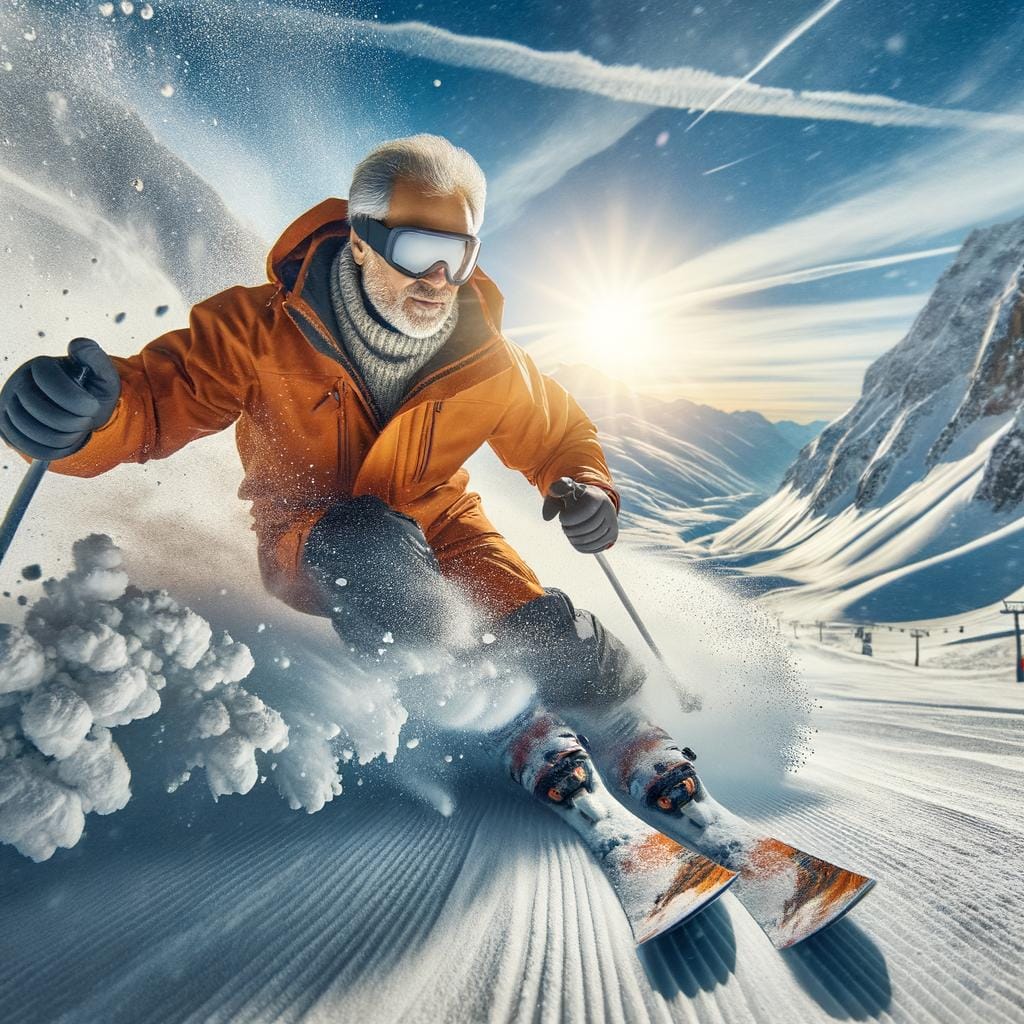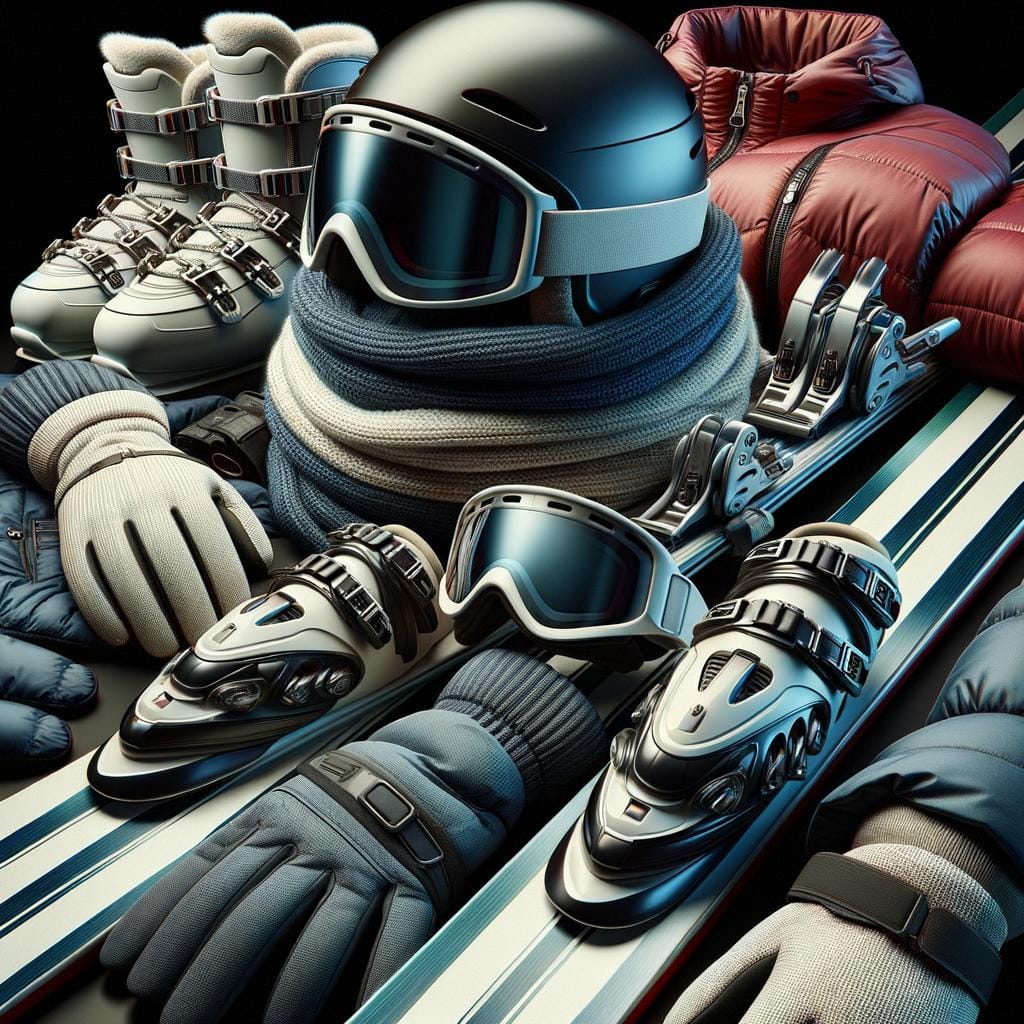Powder skiing, also known as off-piste or backcountry skiing, is a thrilling experience that involves gliding through fresh, untouched snow in remote mountainous areas. The keyword “powder skiing” refers to the practice of skiing on deep, soft snow that has not been compacted or groomed. This type of skiing offers an unparalleled sense of freedom and excitement as skiers navigate through pristine snow-covered landscapes.
The allure of powder skiing lies in the feeling of weightlessness and effortless gliding that comes with floating on top of the fluffy snow. Skiers often describe the sensation as surfing on clouds or flying through a winter wonderland. The challenge of maneuvering through unpredictable terrain and carving smooth turns adds an element of adventure and adrenaline to the experience.
For many avid skiers, powder skiing represents the ultimate winter sport getaway, providing a chance to escape crowded slopes and explore untamed wilderness areas. In this section, we will delve into what makes powder skiing so exhilarating, from the unique sensations it offers to the sense of accomplishment that comes with conquering challenging conditions. Get ready to discover why powder skiing continues to captivate winter sports enthusiasts around the globe.
History of Powder Skiing
Powder skiing, also known as off-piste skiing or backcountry skiing, has a rich history that stretches back to the early days of alpine exploration. The appeal of skiing in untouched powder snow dates back to the 1920s in Europe when skiers began venturing beyond the groomed slopes of resorts in search of fresh challenges and untracked snow.
As skiing technology improved over the decades, with the development of wider skis and advancements in ski bindings, powder skiing grew in popularity among thrill-seekers and ski enthusiasts alike.
Exploration and Innovation
The history of powder skiing is closely intertwined with a spirit of exploration and innovation. Skiers like Hannes Schneider, considered one of the pioneers of modern skiing techniques, played a crucial role in popularizing off-piste skiing. In North America, ski legends such as Warren Miller helped showcase the exhilarating experience of skiing through deep powder in stunning ski films, further fueling interest in this exciting winter sport.
Rise of Freeride Culture
In recent decades, powder skiing has become synonymous with freeride culture – a movement that celebrates adventure, creativity, and pushing personal boundaries on skis. With the rise of extreme sports and a growing emphasis on seeking out unique experiences in nature, powder skiing has evolved from a niche pursuit to a mainstream winter activity enjoyed by skiers of all levels.
The allure of untouched powder fields, thrilling descents through steep terrain, and breathtaking mountain landscapes continue to draw skiers from around the world to explore new horizons in backcountry terrain.
Best Powder Skiing Destinations
One of the most exciting aspects of powder skiing is the opportunity to explore some of the best ski resorts and backcountry areas around the world that offer pristine, untouched snow for an exhilarating adventure. From the steep chutes of Chamonix in France to the deep powder fields of Niseko in Japan, there are countless destinations that cater to powder skiing enthusiasts of all levels.
For those seeking a true adrenaline rush, heli-skiing in Alaska or British Columbia can provide access to remote and untouched terrain for an unforgettable experience.
In North America, popular powder skiing destinations include Jackson Hole in Wyoming, Whistler Blackcomb in British Columbia, and Snowbird in Utah. These resorts are known for their abundant snowfall, challenging terrain, and breathtaking mountain views that make them ideal for powder skiing adventures. Additionally, backcountry areas like the Wasatch Range in Utah and the Canadian Rockies offer endless opportunities for off-piste skiing in pristine wilderness settings.
In Europe, powder skiing aficionados flock to iconic destinations such as Verbier in Switzerland, St. Anton in Austria, and La Grave in France. These resorts are renowned for their steep slopes, deep snow conditions, and vibrant apres-ski scene that attract skiers from around the world. Whether you prefer exploring groomed runs or tackling untamed backcountry terrain, these top ski resorts and backcountry areas promise an unforgettable powder skiing experience that will leave you craving more.
| Destination | Key Features |
|---|---|
| Jackson Hole (Wyoming) | Abundant snowfall, challenging terrain |
| Niseko (Japan) | Deep powder fields |
| Chamonix (France) | Steep chutes |
Powder Skiing Techniques
Powder skiing is a thrilling experience for many skiers who enjoy the sensation of gliding through pristine, untouched snow. One of the key factors that make powder skiing so exhilarating is the feeling of weightlessness as you float on top of the fluffy snow. Unlike groomed trails, powder skiing offers a more dynamic and challenging terrain that requires specific techniques to navigate effectively.
Mastering powder skiing involves understanding how to adjust your technique to accommodate the soft, deep snow. One important tip is to keep your weight evenly distributed on both skis while maintaining a centered stance. This helps you stay balanced and prevents you from sinking too deeply into the powder. Additionally, using wider skis with a rocker or reverse camber design can provide better flotation in powder conditions.
When it comes to turning in powder, it’s essential to be patient and use gradual movements to initiate your turns. Instead of making quick, sharp turns like on packed snow, focus on making smooth and fluid movements to allow your skis to carve through the deep snow. It’s also helpful to lean slightly back and steer with your lower body rather than relying solely on your upper body for control.
Overall, practicing and perfecting these techniques will help you become more confident and efficient in navigating powder-covered slopes. Remember that powder skiing is not only physically demanding but also mentally stimulating as you adapt to changing snow conditions. With dedication and practice, you’ll soon find yourself gliding effortlessly through breathtaking powder fields like a seasoned pro.
| Powder Skiing Techniques | Tips |
|---|---|
| Weight Distribution | Keep weight evenly distributed on both skis |
| Ski Selection | Consider using wider skis with rocker design for better flotation |
| Turning Techniques | Focus on smooth, gradual movements; steer with lower body |
Gear Guide for Powder Skiing
When it comes to powder skiing, having the right gear can make or break your experience on the slopes. From skis designed for floating through deep snow to clothing that keeps you warm and dry, being prepared is essential for a successful powder skiing adventure. Here are some must-have items to consider before hitting the powder:
- Skis: Opt for wider, softer-flexing skis with rocker technology to help you stay on top of deep snow.
- Bindings: Make sure your bindings are properly adjusted and in good condition to prevent accidents on the mountain.
- Boots: Invest in boots that provide proper support, insulation, and comfort for long days of skiing in varying conditions.
- Outerwear: Choose waterproof and breathable jackets and pants to keep you protected from snow, wind, and cold temperatures.
In addition to equipment specifically tailored for powder skiing, there are some essential accessories that can enhance your overall experience on the mountain:
- Goggles: Protect your eyes from sun glare, wind, and snow with high-quality goggles that offer UV protection.
- Gloves or mittens: Keep your hands warm and dry with insulated gloves or mittens designed for winter sports.
- Avalanche safety gear: If skiing in backcountry areas, carry an avalanche transceiver, shovel, and probe to stay safe in case of an emergency.
Remember that proper gear not only enhances your performance while powder skiing but also contributes to your safety on the mountain. Taking the time to invest in quality equipment can make a significant difference in your overall enjoyment of this exhilarating winter sport. So pack up your gear, hit the slopes, and get ready for an unforgettable powder skiing experience.
Safety Precautions for Powder Skiing
When it comes to powder skiing, one of the most crucial aspects to consider is safety. With the allure of untouched, fresh snow in backcountry areas and remote ski resorts, there are risks that every powder skier must be aware of and prepared for. Understanding avalanche awareness, backcountry safety, and overall risk management can make all the difference between a thrilling adventure and a dangerous situation.
To ensure a safe and enjoyable powder skiing experience, here are some important safety precautions to keep in mind:
- Always check the avalanche forecast before heading out: Understanding the current conditions and potential avalanche risk in the area you plan to ski is essential for your safety.
- Carry the necessary avalanche safety equipment: Every skier venturing into backcountry terrain should have a beacon, probe, shovel, and knowledge on how to use them effectively in case of an emergency.
- Travel with a partner and stay connected: Skiing with a buddy can provide critical support in case of an accident or getting lost. Make sure to establish communication signals beforehand and stay within sight or shouting distance at all times.
In addition to these precautions, it’s also important to have a solid understanding of backcountry navigation, proper route planning, and emergency protocol. Taking an avalanche safety course or enlisting the expertise of a certified guide can provide valuable knowledge and skills that can enhance your safety while powder skiing. Remember that taking risks in uncontrolled environments like backcountry areas requires careful consideration and preparation to ensure a smooth and secure skiing experience. Stay safe out there.
Powder Skiing Etiquette
Powder skiing is a thrilling experience that many winter sports enthusiasts look forward to. However, as with any outdoor activity, it is essential to practice proper etiquette to ensure a safe and enjoyable environment for all. When hitting the slopes for some powder skiing fun, it is crucial to respect the environment, fellow skiers, and local rules.
One important aspect of powder skiing etiquette is respecting the environment. Skiers should always follow designated trails and avoid venturing into protected areas or disrupting wildlife habitats. Additionally, it is important to pack out any trash or waste properly to keep the natural surroundings pristine for future generations of skiers to enjoy. By minimizing your impact on the environment, you can help preserve the beauty of powder skiing destinations for years to come.
Another key component of powder skiing etiquette is showing respect towards fellow skiers. When navigating through fresh powder, be mindful of other skiers around you and avoid cutting them off or causing collisions.
Always yield to those downhill or in front of you and communicate effectively with others on the slopes. Additionally, offering a helping hand to a fellow skier in need or giving words of encouragement can go a long way in fostering a positive and supportive ski community while enjoying the exhilarating experience of powder skiing together.
Personal Stories and Experiences
Powder skiing is truly a one-of-a-kind experience that brings together the thrill of speed, the beauty of untouched snow, and the challenge of mastering its unique terrain. As seasoned powder skiers can attest, there is nothing quite like gliding through fresh powder with each turn carving a path of exhilaration. The feeling of weightlessness and effortless movement as you float on top of the snow is what keeps powder skiing enthusiasts coming back for more.
For many, powder skiing is not just a sport but a passion that ignites a sense of adventure and freedom unlike any other winter activity. The adrenaline rush of racing down steep slopes, the sense of accomplishment when conquering difficult terrain, and the camaraderie shared with fellow powder skiers all contribute to the allure of this thrilling sport.
Whether you are a beginner eager to learn or an experienced skier seeking new challenges, powder skiing offers endless opportunities for excitement and growth.
In conclusion, powder skiing is more than just sliding down snowy slopes – it’s a way of life for those who seek adventure, adrenaline, and awe-inspiring natural beauty. From the history and evolution of this popular winter sport to the best destinations around the world for epic powder days, there is something truly magical about carving your own path through untouched snow.
So grab your gear, hit the slopes, and experience firsthand why powder skiing is considered by many as the pinnacle of winter sports.
Frequently Asked Questions
What Is Powder in Skiing?
Powder in skiing refers to freshly fallen snow that is light, fluffy, and dry. It is highly sought after by skiers for its soft texture and ability to provide a smooth gliding experience on the slopes.
What’s So Special About Powdered Snow for Skiers?
Powdered snow is special for skiers because of its unique qualities that enhance the skiing experience. Its fluffy consistency allows skiers to carve effortlessly through it, providing a feeling of weightlessness and freedom on the slopes. Additionally, powder creates a cushioning effect, making falls less painful compared to skiing on harder, packed snow.
How Do You Ski Powder Without Sinking?
Skiing powder without sinking requires a specific technique that involves maintaining speed and keeping your weight balanced properly. Skiers should distribute their weight evenly on both skis, stay relaxed to allow the skis to float on top of the snow, and use wide turns to control their descent without getting stuck in deep snow.
Additionally, using wider skis designed for powder skiing can also help prevent sinking and increase stability on the slopes.

An avid outdoor enthusiast, writer, and environmental advocate who has spent over two decades exploring the world’s most breathtaking landscapes. With a background in environmental science and a passion for adventure, Frances combines her love for nature with her talent for storytelling to inspire others to embark on their own outdoor journeys.



